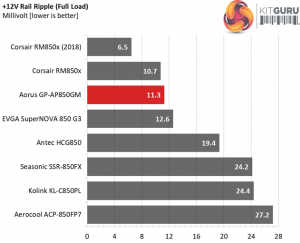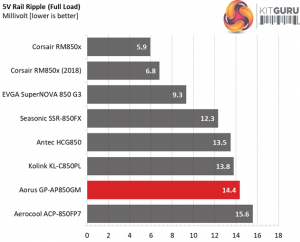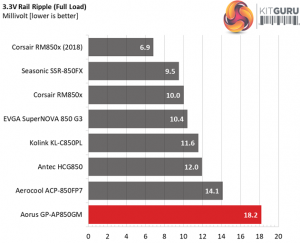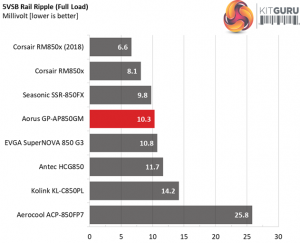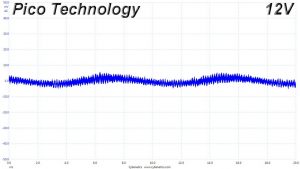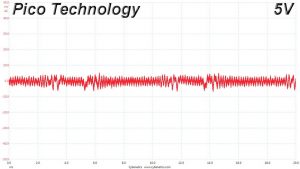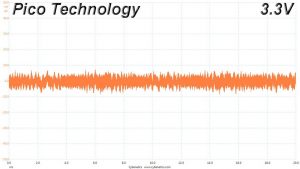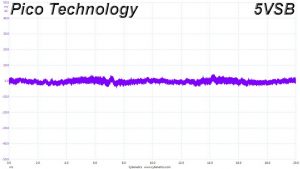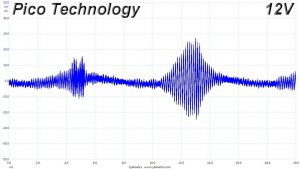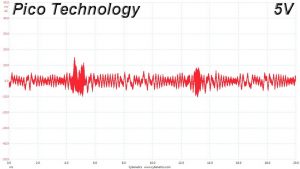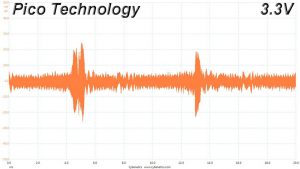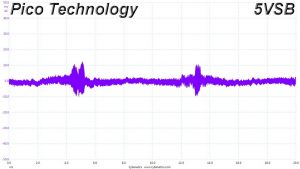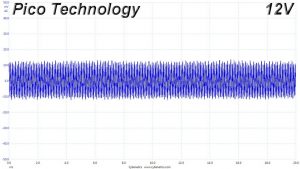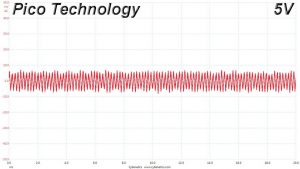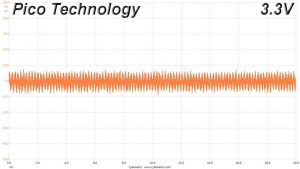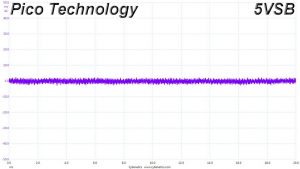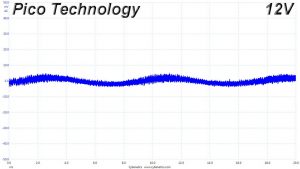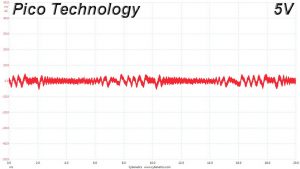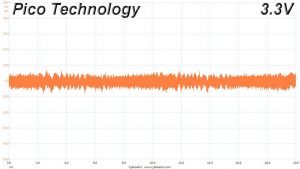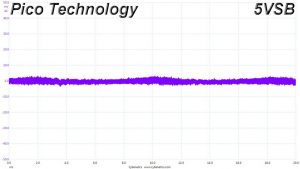To learn how we measure ripple, please click here.
The following table includes the ripple levels we measured on the GP-AP850GM’s rails. The limits, according to the ATX specification, are 120mV (+12V) and 50mV (5V, 3.3V, and 5VSB).
| Test | 12V | 5V | 3.3V | 5VSB | Pass/Fail |
| 10% Load | 4.9 mV | 6.2 mV | 13.1 mV | 5.2 mV | Pass |
| 20% Load | 22.5 mV | 7.2 mV | 13.2 mV | 6.4 mV | Pass |
| 30% Load | 7.1 mV | 6.1 mV | 12.3 mV | 4.9 mV | Pass |
| 40% Load | 5.6 mV | 6.5 mV | 11.9 mV | 4.9 mV | Pass |
| 50% Load | 5.6 mV | 7.3 mV | 12.3 mV | 4.7 mV | Pass |
| 60% Load | 6.4 mV | 8.9 mV | 13.6 mV | 6.5 mV | Pass |
| 70% Load | 7.0 mV | 10.1 mV | 14.5 mV | 6.7 mV | Pass |
| 80% Load | 8.3 mV | 10.3 mV | 14.2 mV | 7.7 mV | Pass |
| 90% Load | 7.7 mV | 9.1 mV | 15.2 mV | 6.4 mV | Pass |
| 100% Load | 11.3 mV | 14.4 mV | 18.2 mV | 10.3 mV | Pass |
| 110% Load | 77.1 mV | 28.6 mV | 52.9 mV | 26.6 mV | Fail |
| Crossload 1 | 27.1 mV | 16.9 mV | 19.3 mV | 5.8 mV | Pass |
| Crossload 2 | 9.9 mV | 11.5 mV | 16.1 mV | 7.8 mV | Pass |
The ripple suppression is great on all rails, as long as you don't exceed the platform's nominal capacity (which normally you should not do in any case). Apparently this platform doesn't provide much of a headroom, so even with 110% of the max-rated-load it starts to behave strange.
Ripple Oscilloscope Screenshots
The following oscilloscope screenshots illustrate the AC ripple and noise registered on the main rails (+12V, 5V, 3.3V and 5VSB). The bigger the fluctuations on the screen, the bigger the ripple/noise. We set 0.01 V/Div (each vertical division/box equals 0.01V) as the standard for all measurements.
 KitGuru KitGuru.net – Tech News | Hardware News | Hardware Reviews | IOS | Mobile | Gaming | Graphics Cards
KitGuru KitGuru.net – Tech News | Hardware News | Hardware Reviews | IOS | Mobile | Gaming | Graphics Cards


